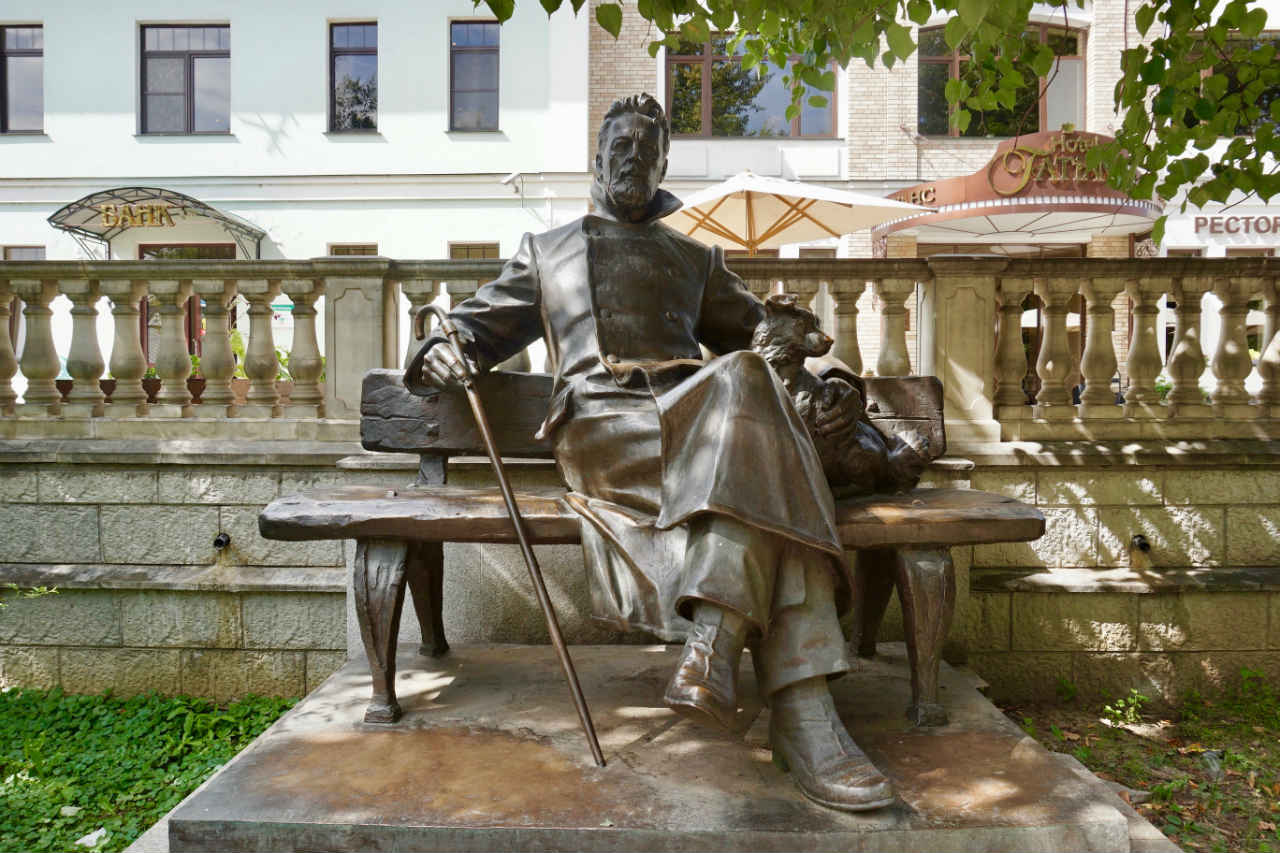
With this post we can call it a baker’s dozen – this is the lucky 13th time I have written about an Alexander Pushkin statue, monument or bust. It has taken me forever to get to what is arguably the most famous and most popular of all Pushkin monuments – the one that stands in front of the Russian Museum (formerly the Mikhailov Palace) at the center of Arts Square in St. Petersburg.
I absolutely love this monument, the square it stands in, this section of the city, the backdrop behind the monument… in short, nothing but love today. I love everything about this place. And that’s not going out on a limb, folks, I think that would describe 99.9% of everyone who has ever been here. I don’t know what to say about the .1% if my calculations are right.
The monument is the work of Mikhail Anikushin (1917-1997) who collaborated with architect Vasily Petrov (1916-1992). It was unveiled June 19, 1957, precisely one day after my 3rd birthday. What a shame that potential little coincidence was missed! Although due to time differences, if the ceremony was held, say, at 10 a.m. in what was then Leningrad, it was still June 18 where I was born in California, but I am indulging myself…
I must admit, all these dates are somewhat surprising. I find it hard to believe the monument has been with us for a mere 55 years. I guess even wilder sounding to me now is that it was just 22 years old the first time I saw it. It was still a baby, and I hardly thought that of myself at that time! So engrained is this image of Pushkin in the Russian cultural memory (to say nothing of mine), it surely seems like it should be 100 or 200 years old. And then consider the timelines of the creators – I shared residence in Russia with them for quite a few years – nine with Anikushin, and four with Petrov.
Even Arts Square is newer than I would have thought, at least in name. That was bestowed on the area September 26, 1940, superseding the name Lassalle Square (named in the early 1920s for German philosopher Ferdinand Lassalle), that replacing the original name of Mikhailov Square (or Mikhailov Palace Square), which had come into being in 1834 after the great architect Karl Rossi had built the beautiful ensemble of buildings that encircles most of the square. The area actually goes back to a garden and an area set aside for hunting that also had ties to the Finns and Swedes who lived in St. Petersburg in the early 18th century. But, again, we digress…




We only have a vague notion of what Pushkin actually looked like although we are quite certain we know his image well. But the fact is that artists have copied artists copying artists in likenesses of the poet for ages now. So, when we tend to think, “Oh, this looks like Pushkin!” we are actually saying, “Oh, this looks like what other artists have imagined Pushkin as looking like, and it is what we are used to.” Pushkin himself was sarcastic about his looks, once describing himself thus: “”A true demon in pranks, a real monkey in face.” However, time and tastes have determined that the portraits of Pushkin by Orest Kiprensky and Vasily Tropinin – to say nothing of the pen-and-ink self-caricatures that Pushkin did himself – are what we tend to use as benchmarks.
Anikushin’s version is very much drawn from these sources. His version is what we expect and want to see. And it is so beautifully done that we don’t question its veracity. This Pushkin is soft, gentle, warm, welcoming, intelligent, thoughtful and beautifully proportioned. His hair is perfect in its curly chaos. His gesturing right arm and hand stretch out graciously and seem to welcome us into the poet’s presence. Pushkin’s eyes are aimed just far enough out into the distance to suggest a deep curiosity in whatever surrounds him, but they are focused in close enough to include us in his purview. His stance on the pedestal is light and jaunty, but firm. In short, this is the ideal monument to an ideal subject (and no one has ever doubted or will ever doubt that Pushkin is that).
Arts Square is also pretty near the ideal location to show this monument off. It is large, with wide, clear paths leading to the statue from several angles. You can have an unobstructed view of Pushkin from so far away that you can’t even really see him. At the same time, there are enough trees planted around the central space on which the monument stands, that there is a sense of closeness and intimacy to it all as well. People sit on benches surrounding the monument as if visiting a friend or relative. The spectacular columned facades of the Rossi-built buildings around the square provide exquisite backgrounds. They lend the image of Pushkin a regal, powerful presence, although the human form of Pushkin always rises up above them, always in a position of control.


























































































